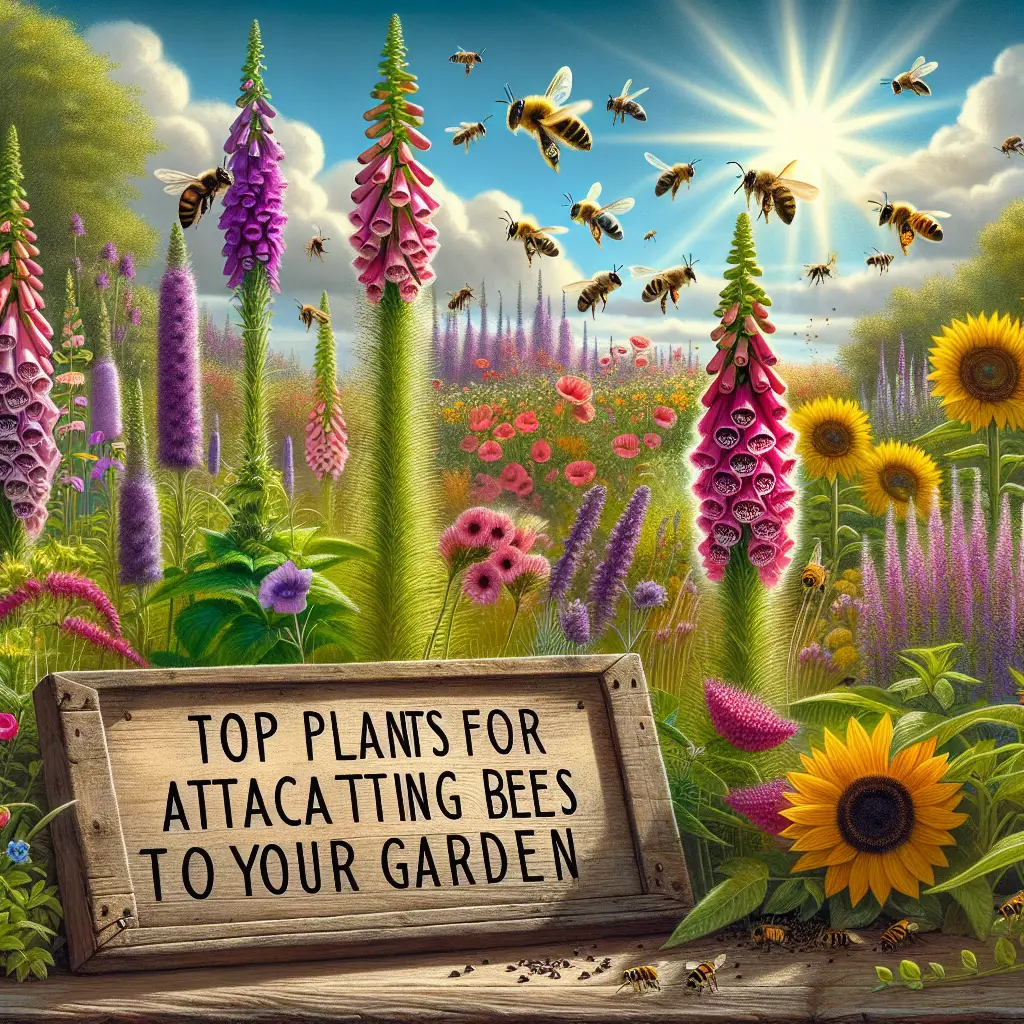Title: Top Plants for Attracting Bees to Your Garden
Introduction:
Gardening aficionados and nature lovers alike understand the critical role bees play in our ecosystem. As pollinators, bees are vital for the growth of our gardens, ensuring the reproduction of plants and the production of fruits and vegetables. But with bee populations in decline, it’s more important than ever to make our gardens inviting to these essential creatures. In this blog post, we’ll explore some of the top plants that can help attract bees to your garden, turning it into a buzzing haven for these beneficial insects.
- Lavender – The Aromatic Attraction
Not only does lavender (Lavandula) boast a calming scent and beautiful purple blooms, but it’s also a magnet for bees. As researched by the Royal Horticultural Society, lavender’s rich nectar proves irresistible to bees. This hardy plant thrives in well-drained soil and full sun, making it a low-maintenance option for gardeners. Plus, there’s the added benefit of being able to harvest lavender for its aroma and essential oils.
- Foxglove – A Towering Temptation
The bell-shaped flowers of the foxglove (Digitalis purpurea) are perfect for bees, especially the long-tongued varieties. Foxgloves create a striking vertical interest in any garden setting. Be mindful, however, as foxglove can be toxic if ingested, so it’s best to keep away from areas where pets and children play. Find foxgloves and other bee-friendly plants from reputable nurseries like Burpee.
- Sunflowers – The Sunny Sentinels
Sunflowers (Helianthus annuus) are not just towering beauties; they are also excellent for attracting bees. According to studies, bees are attracted to the bright yellow hues and the plentiful pollen that these flowers provide. Moreover, after the blossoms fade, sunflowers offer seeds that can feed birds and wildlife.
- Borage – The Star-shaped Beacon
Borage (Borago officinalis), with its striking blue star-shaped flowers, is another standout in the bee-friendly garden. This plant is not only easy to grow, but also continuously blooms throughout the summer, providing a consistent food source for bees, as highlighted by a Cornell University study.
- Bee Balm – The Pollinator’s Perfume
Bee balm (Monarda) is practically synonymous with bee attraction. Its unique flower structure and intense fragrance make it an appealing destination for pollinators. Bee balm comes in several colors and can be a fantastic addition to the perennial border. Plus, as its name suggests, bee balm is among the top choices for pollinator gardens.
Incorporating these plants into your garden:
When designing a bee-friendly garden, diversity is key. Aim to include plants that flower at different times of the year to provide a continuous food source. Remember to avoid pesticides, as these can be harmful to bees. Instead, opt for organic gardening practices to keep your garden healthy and safe for all pollinators.
Keep your garden well-watered and mulched to provide a cool retreat for bees on hot days. Also, consider leaving a small dish of water out for bees to drink, ensuring to add some pebbles or twigs for them to land on safely.
Conclusion:
By selecting the right plants and providing a healthy habitat, you can help support the bee population right from your backyard. The additions of lavender, foxglove, sunflowers, borage, and bee balm don’t just contribute to a vibrant, diverse garden — they also play a part in sustaining the vital bee populations our ecosystems rely on. So roll up your sleeves, and let’s get planting with the welfare of bees in mind!
Bees are gardeners’ allies, and by inviting them into our spaces, we ensure a more fruitful and beautiful environment. Visit your local garden center or check out online options to start your bee-friendly garden today.
Remember to be patient; it might take some time for the bees to find your new plant paradise. But once they do, you’ll enjoy the lively buzz of nature’s tireless workers, secure in the knowledge that you’re contributing to their survival and the health of your garden.
[tagline: Embrace nature’s friends and experience the joy of a bee-filled garden!]
(Note: The links provided in this article are for reference purposes and are not sponsored. Please visit the provided websites for the most current prices and availability.)

